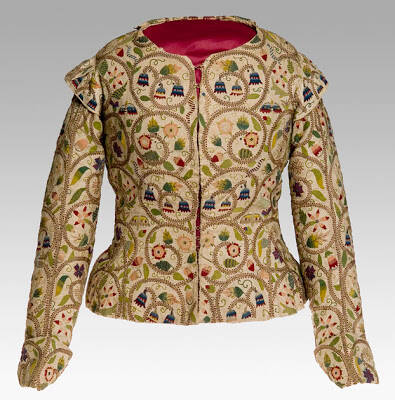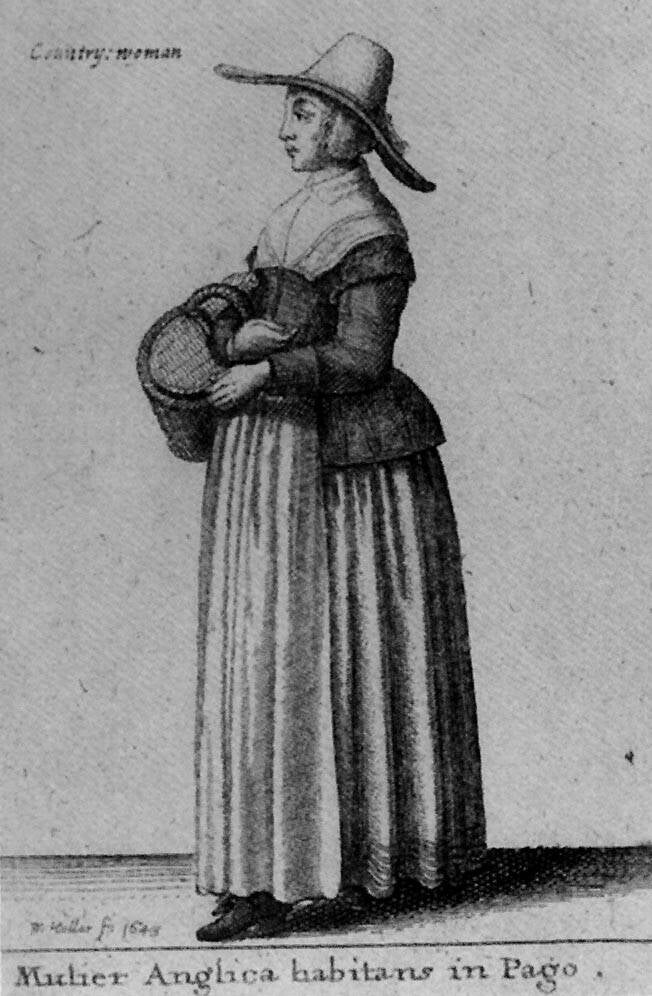Waistcoat
During the 17th Century a ‘waistcoat’ worn by a woman was a sleeved outer garment, what we would probably describe as a bodice today.
Waistcoats started out in the previous century as typical working class apparel. Waistcoats were simple, practical garments which the wearer could easily put on by herself without the help of another person. It wasn’t long before they were being worn by the upper classes, at least for informal occasions and in the privacy of the home and personal chambers.
Waistcoats fastened down the front, with hooks and eyes, ribbon ties, buttons or pins. There was a short shirt which flared out over the hips, either being made from separate square tabs, or inserted gores. Sleeves followed the prevailing fashion.
There was a fashion early century for beautifully embroidered ‘jackets’, using colourful silk threads and ‘spangles’ (sequins). By 1630s, waistcoats were often made from expensive fabrics like satin and had very full sleeves and low necklines and were laced over separate stomachers. It was also quite common by this date for waistcoat and petticoat to be made in matching fabric – a suit, possibly with a matching gown.
Period illustrations seem to show a secondary over waistcoat. This was similar in appearance to the top part of a gown, but with the tabbed waistline or short gored skirt of a waistcoat. Sleeves were always short to the elbow revealing the waistcoat sleeve underneath (alternatively bodies with attached sleeves might have been worn). This over waistcoat may have been called a ‘hungerline’, anglicised from the French ‘hongreline’ meaning Hungarian. A number of these garments appear in the wardrobe accounts of Queen Henrietta Maria during the early 1630s.

